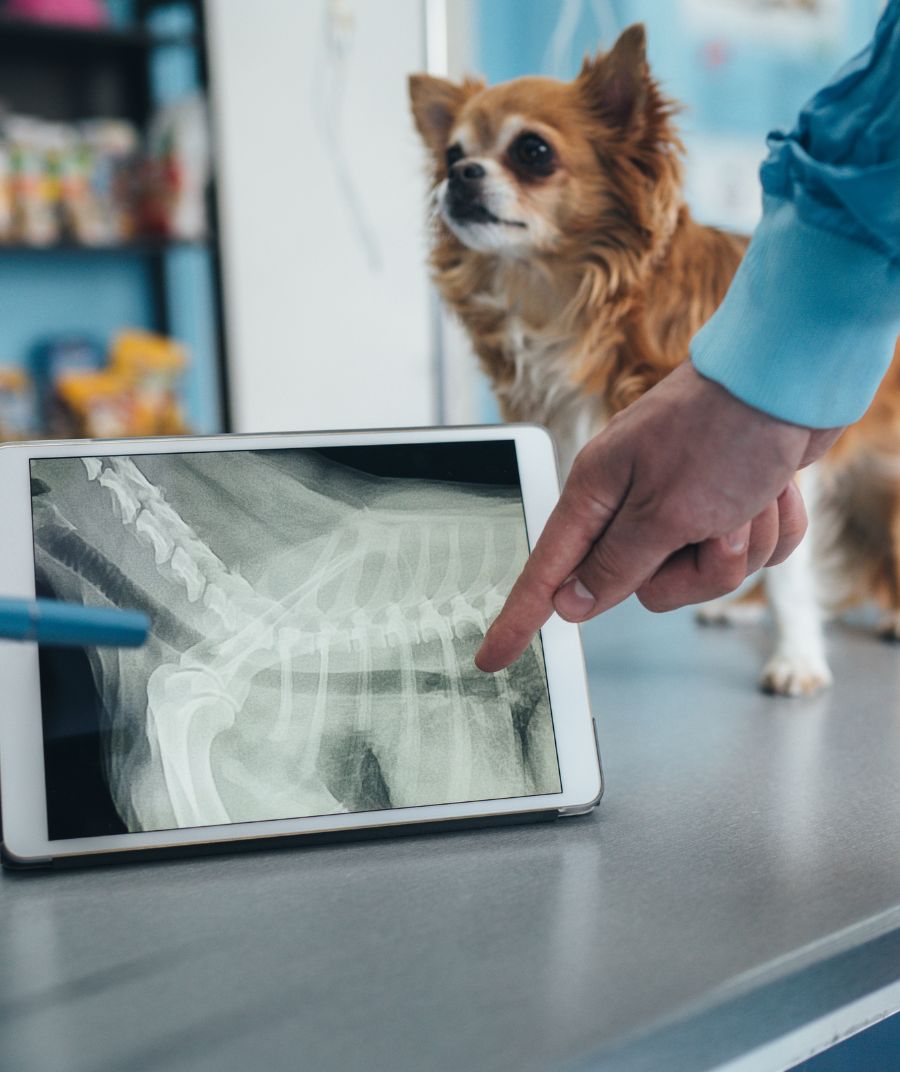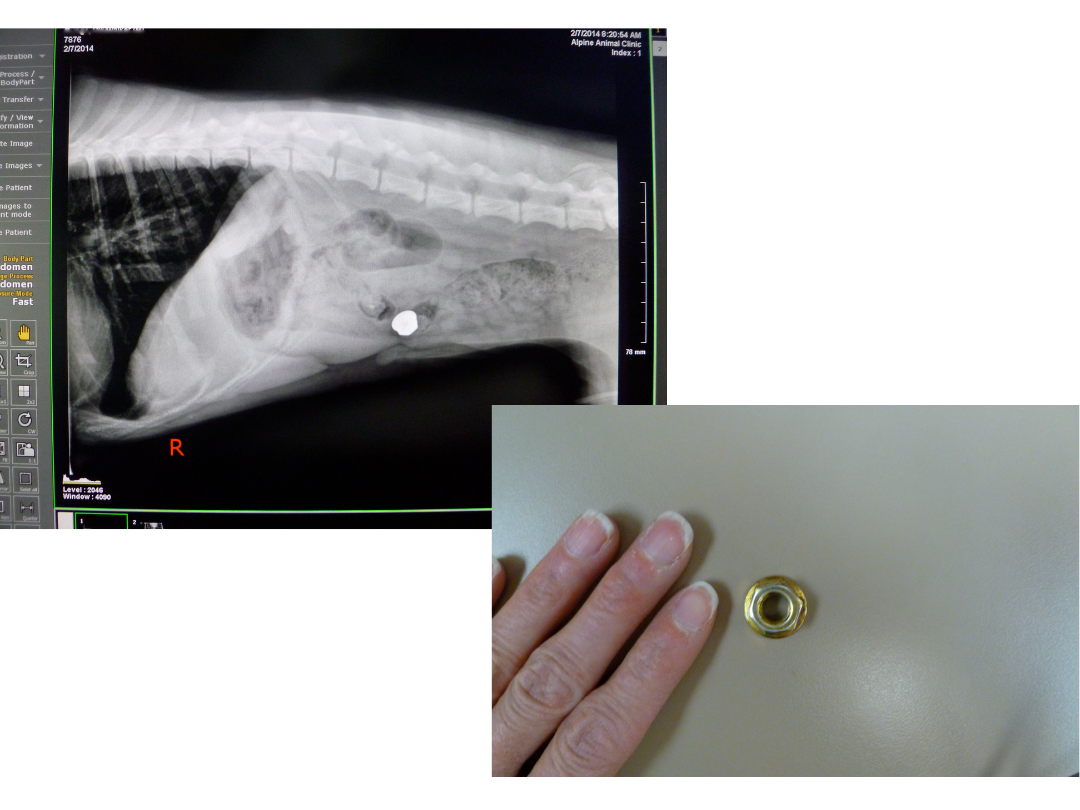WHAT’S YOUR PET HIDING?
Pet X-Ray & Imaging
Imaging can be necessary in diagnosing what is wrong with your pet. Ultrasound and X-rays are different types of imaging that “see” different things.

Comprehensive Pet X-Ray & Imaging
X-ray is excellent for imaging bone, of course, but is also good at imaging 2-dimensions of organs and other “soft tissue” and through air-filled structures such as lungs and the intestinal tract.
X-ray is an excellent way to image some foreign materials inside the body, such as bullets, stones, metal, and some other materials. For soft items such as fabrics, wood, leather, and plastics, we can use barium, a special material that is swallowed, to outline these foreign materials in the intestinal tract.
Alpine utilizes the best-quality modern imaging equipment with high-resolution digital x-ray and ultrasound machines. Digital X-rays are far more detailed than old technology using film, which has to be developed. The new digital X-ray also uses lower radiation, which is safer for your pet and our staff at Alpine Animal Clinic. We can also give you all of your pet’s images on a USB thumb drive we make for you to keep for viewing at home and for your pet’s permanent medical record.

Digital x-ray allows very precise measurements for complicated orthopedic surgery, such as for TPLO cruciate repair.

Ultrasound
The 2-dimensions X-rays give you means you can see the size and shape of things but not the full 3-dimensions of any particular structure. Ultrasound also allows visualization of that 3rd dimension of soft tissues, such as the liver, kidneys, urinary bladder, or spleen, but does not image air-filled structures much. It is excellent for imaging cancerous masses, for instance, and can use specialized functions, such as Doppler, to evaluate blood flow to an area and detail how masses are growing. This can be very useful in deciding if surgery could be helpful, if growth is likely to be cancerous or not, or if a mass has spread to other organs.
Ultrasound is also helpful in obtaining a small biopsy sample of something challenging to reach, helping ensure the tissue you are sampling is the tissue you are targeting.
Ultrasound is painless and often does not require sedation. It can provide a great deal of information quickly, painlessly, and without the risk of surgery or anesthesia.
